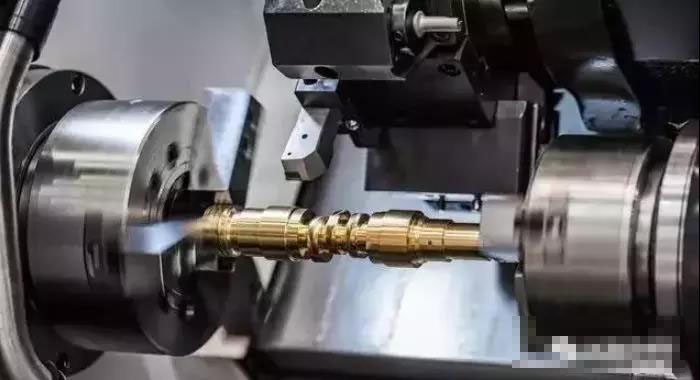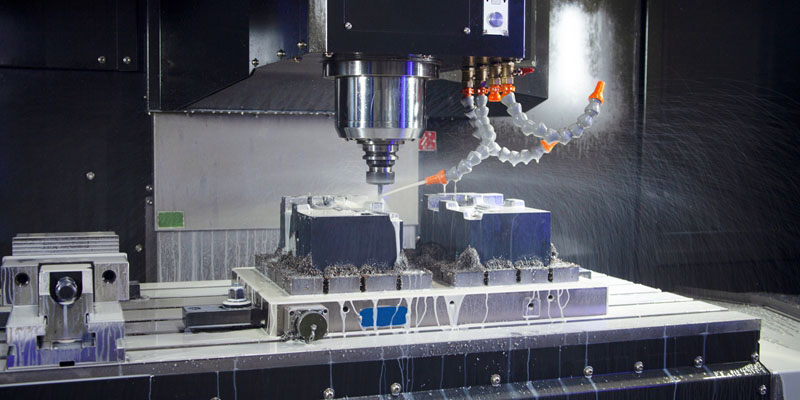The CNC lathe can be equipped with a multi-station turret or power turret. It has a wide range of processing performance. It can process linear cylinders, oblique cylinders, arcs and various threads, grooves, worms and other complex workpieces. It has linear interpolation, circular Arc interpolation has various compensation functions, and has played a good economic effect in the mass production of complex parts. When programming a CNC lathe, the cutting amount for each process must be determined. When choosing the cutting parameters, we must fully consider the various factors that affect cutting, choose the correct cutting conditions, and reasonably determine the cutting parameters, which can effectively improve the machining quality and output.
The conditions that generally affect the cutting speed, depth and feed rate are:
The rigidity of machine tools, tools, cutting tools and workpieces,
Cutting speed, cutting depth, cutting feed rate,
Workpiece accuracy and surface roughness,
Tool life expectancy and maximum productivity
Types of cutting fluids and cooling methods
The hardness of the workpiece material and the heat treatment condition
Number of workpieces
The life of the machine tool.
Among the above factors, cutting speed, cutting depth, and cutting feed rate are the main factors.
1. Factors Affecting The Cutting Speed Of The Tool
When programming, the programmer must determine the cutting amount for each process. When choosing the cutting parameters, we must fully consider the various factors that affect the cutting, choose the correct cutting conditions, and the reasonable cutting speed directly affects the cutting efficiency. If the cutting speed is too low, the cutting time will be longer and the tool cannot perform its functions. If the cutting speed is too fast, although the cutting time can be shortened, the tool is prone to high heat, which affects the life of the tool. There are many factors that determine the cutting speed, which can be summarized as follows:
(1) Tool Material
Determining the cutting amount can effectively improve the machining quality and output.
Different tool materials have different maximum cutting speeds. The high temperature resistant cutting speed of high-speed steel tools is less than 50m/min, the high temperature resistant cutting speed of carbide tools can reach more than 100m/min, and the high temperature resistant cutting speed of ceramic tools can be as high as 1000m/min.

(2) Workpiece Material
The hardness of the workpiece material will affect the cutting speed of the tool. When the same tool is processing hard materials, the cutting speed should be reduced, and when processing softer materials, the cutting speed can be increased.
(3) Tool Life
If the tool service time (life) is long, a lower cutting speed should be used. Conversely, a higher cutting speed can be used.
(4) Cutting Depth And Cutting Amount
The cutting depth and feed amount are large, the cutting resistance is also large, and the cutting heat will increase, so the cutting speed should be reduced.
(5) The Shape Of The Tool
The shape of the tool, the size of the angle, and the sharpness of the cutting edge will affect the selection of the cutting speed.
(6) Use Of Coolant
Machine tools with good rigidity and high precision can increase the cutting speed; otherwise, the cutting speed needs to be reduced.
Among the above-mentioned factors that affect the cutting speed, the material of the tool has the most important influence.

2. Factors Affecting The Cutting Depth Of The Tool
The cutting depth is mainly restricted by the rigidity of the machine tool. When the rigidity of the machine tool allows, the cutting depth should be as large as possible. If it is not restricted by the machining accuracy, the cutting depth can be made equal to the machining allowance of the part. This can reduce the number of passes.
The spindle speed should be determined according to the allowable cutting speed of the machine tool and tool. It can be selected by calculation method or look-up table method.
3. Factors Affecting The Cutting Feed Rate Of The Tool
The feed amount f (mm/r) or feed speed F (mm/min) should be selected according to the machining accuracy, surface roughness, tool and workpiece material of the part. The maximum feed rate is limited by the rigidity of the machine tool, the feed drive and the numerical control system.
When selecting the cutting amount, the programmer must choose the cutting amount that suits the characteristics of the machine tool and the best durability of the tool according to the requirements of the machine tool manual and the durability of the tool. Of course, you can also use the analogy method to determine the cutting amount based on experience. No matter what method is used to select the amount of cutting, it is necessary to ensure that the durability of the tool can complete the processing of a part, or ensure that the durability of the tool is not less than one work shift, and the minimum time cannot be less than half a shift.



So educational